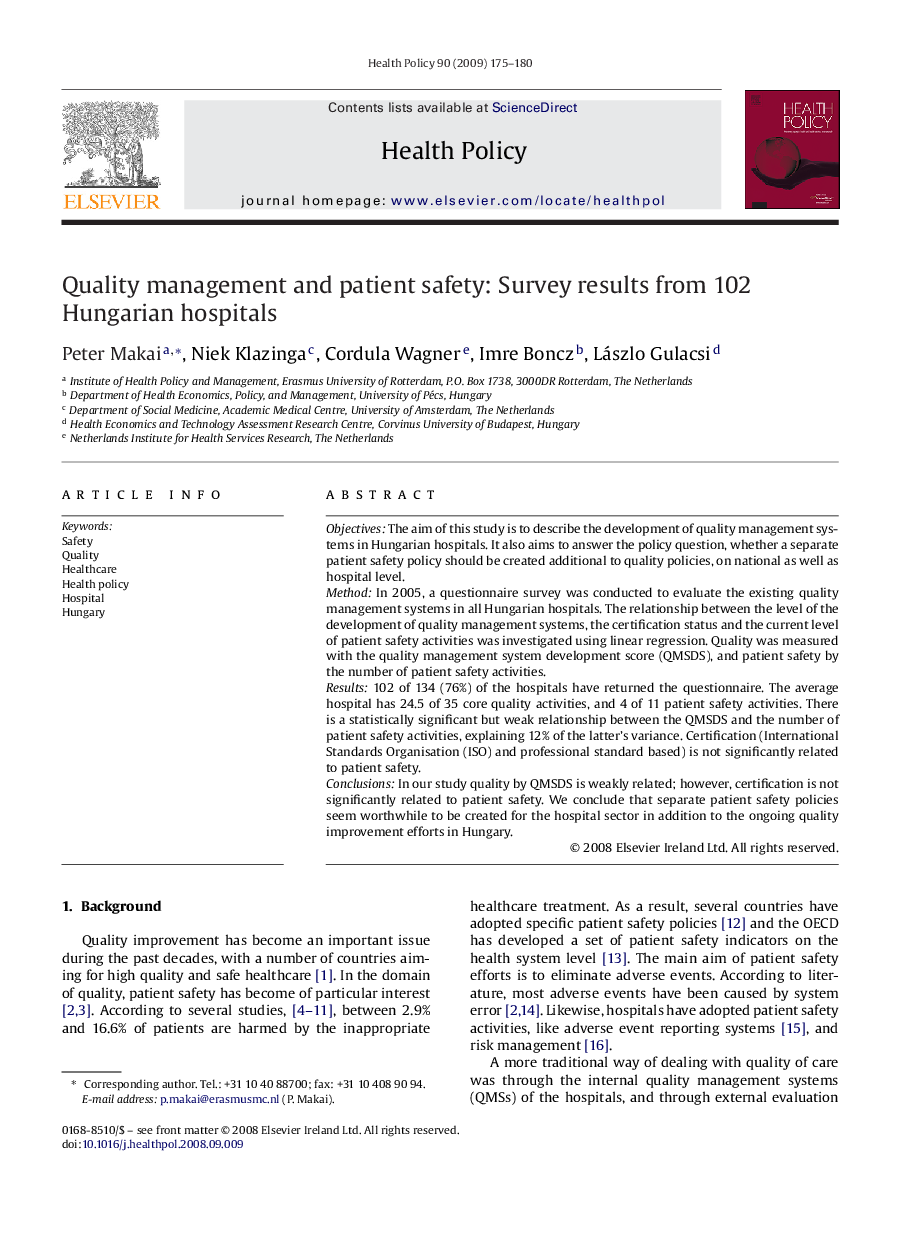| Article ID | Journal | Published Year | Pages | File Type |
|---|---|---|---|---|
| 4198491 | Health Policy | 2009 | 6 Pages |
ObjectivesThe aim of this study is to describe the development of quality management systems in Hungarian hospitals. It also aims to answer the policy question, whether a separate patient safety policy should be created additional to quality policies, on national as well as hospital level.MethodIn 2005, a questionnaire survey was conducted to evaluate the existing quality management systems in all Hungarian hospitals. The relationship between the level of the development of quality management systems, the certification status and the current level of patient safety activities was investigated using linear regression. Quality was measured with the quality management system development score (QMSDS), and patient safety by the number of patient safety activities.Results102 of 134 (76%) of the hospitals have returned the questionnaire. The average hospital has 24.5 of 35 core quality activities, and 4 of 11 patient safety activities. There is a statistically significant but weak relationship between the QMSDS and the number of patient safety activities, explaining 12% of the latter's variance. Certification (International Standards Organisation (ISO) and professional standard based) is not significantly related to patient safety.ConclusionsIn our study quality by QMSDS is weakly related; however, certification is not significantly related to patient safety. We conclude that separate patient safety policies seem worthwhile to be created for the hospital sector in addition to the ongoing quality improvement efforts in Hungary.
